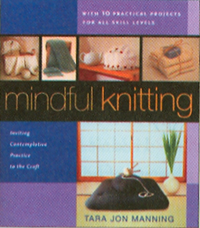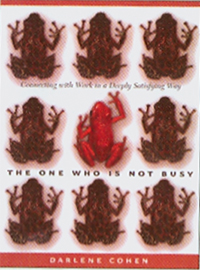 Zen lore is rife with tales of unconventional masters, idiosyncratic, non-verbal teachings, and disregard for traditional Buddhist scripture. The Zen Canon: Understanding the Classic Texts (Oxford University Press, 2004, $60 cloth, $22.50 paper, 336 pp.), an absorbing collection edited by Steven Heine and Dale S. Wright, redeems the written word. Nine previously unpublished essays explore the rich literary heritage of Zen (“Chan” in China, where it began) and its role in the development of East Asian Buddhist practice. Examining the Mazu yulu, an influential text in the “recorded sayings” (of masters) genre, Mario Poceski reconsiders the notion of privileging teacher-student “encounter dialogues” over more doctrinal teaching methods, in light of authenticity questions. Co-editor Wright’s analysis of the Huang-Po texts shows how Chan/Zen’s great innovator pushed traditional Buddhist instruction “toward an audacious effort to evoke a transformational experience”—while later editions pushed his teachings even farther, to square with Zen practice at the time. Ishii Shudo offers a novel reading of theWu-men kuan (Mumonkan in Japanese), the collection of koans—mental puzzles—fundamental to Rinzai Zen practice.
Zen lore is rife with tales of unconventional masters, idiosyncratic, non-verbal teachings, and disregard for traditional Buddhist scripture. The Zen Canon: Understanding the Classic Texts (Oxford University Press, 2004, $60 cloth, $22.50 paper, 336 pp.), an absorbing collection edited by Steven Heine and Dale S. Wright, redeems the written word. Nine previously unpublished essays explore the rich literary heritage of Zen (“Chan” in China, where it began) and its role in the development of East Asian Buddhist practice. Examining the Mazu yulu, an influential text in the “recorded sayings” (of masters) genre, Mario Poceski reconsiders the notion of privileging teacher-student “encounter dialogues” over more doctrinal teaching methods, in light of authenticity questions. Co-editor Wright’s analysis of the Huang-Po texts shows how Chan/Zen’s great innovator pushed traditional Buddhist instruction “toward an audacious effort to evoke a transformational experience”—while later editions pushed his teachings even farther, to square with Zen practice at the time. Ishii Shudo offers a novel reading of theWu-men kuan (Mumonkan in Japanese), the collection of koans—mental puzzles—fundamental to Rinzai Zen practice.
Wisdom Publications kicks off its new Library of Tibetan Classics with Ornament of Stainless Light: An Exposition of the Kalachakra Tantra (2004, $49.95 cloth, 728 pp.), a commentary by the fifteenth-century scholar Khedrup Norsang Gyatso on the eleventh-century Indian master Pundarika’s classic text. Gavin Kilty translated this edition. The thirty-volume series is being developed by the Institute of Tibetan Classics in Montreal, to make more than two hundred texts in the Tibetan literary heritage widely available. General editor of the series is Institute President Thupten Jinpa, the Dalai Lama’s principal English translator for nearly twenty years.
Bruce Newman, a longtime student of Chokyi Nyima Rinpoche, relays his own experiences with finding a teacher and establishing a practice front and center in A Beginner’s Guide to Tibetan Buddhism: Notes from a Practitioner’s Journey (Snow Lion, 2004, $14.95 cloth, 242 pp.). Written by a Westerner for Westerners, this how-to overview contains everything from charts explaining the different schools and lineages of Tibetan Buddhism to explicit advice on discipline, guru devotion, and pitfalls like “emotional enthrallment” (detailed in an absorbing chapter called “Getting It Wrong”).
To the ever-expanding shelf of books on applying Buddhist principles and practice to everyday life we can add Awake at Work: Facing the Challenges of Life on the Job(Shambhala, September 2004, $21.95 cloth, 246 pp.). Michael Carroll, a corporate executive-turned-consultant and a dharma teacher in Chögyam Trungpa’s lineage, provides thirty-five pithy slogans for contemplation – Trungpa called this lojong practice—with strategies for using workplace challenges as a path to inner balance. From “Be authentic” to “Welcome the tyrant” to “Cultivate li [integrity],” these teachings have practical application well beyond the job. In The One Who is Not Busy: Connecting with Work in a Deeply Satisfying Way (Gibbs Smith, 2004, $14.95 cloth, 144 pp.), Darlene Cohen, a priest at the San Francisco Zen Center who teaches mindfulness in corporate and medical settings, offers Zen-inspired insights and exercises for dealing with “terminal overwhelm.” Especially useful are the meditations for cultivating “simultaneous inclusion”—the Zen way to stress-free multi-tasking through nondual perception of whatever is at hand.
In The One Who is Not Busy: Connecting with Work in a Deeply Satisfying Way (Gibbs Smith, 2004, $14.95 cloth, 144 pp.), Darlene Cohen, a priest at the San Francisco Zen Center who teaches mindfulness in corporate and medical settings, offers Zen-inspired insights and exercises for dealing with “terminal overwhelm.” Especially useful are the meditations for cultivating “simultaneous inclusion”—the Zen way to stress-free multi-tasking through nondual perception of whatever is at hand.
If meditation alone doesn’t do it for you, try keeping your hands, as well as your mind, occupied. In Mindful Knitting: Inviting Contemplative Practice to the Craft (Tuttle, 2004, $12.95 paper, 134 pp.), Tara Jon Manning, a self-described “dharma brat” raised by two Trungpa students, introduces shamatha (tranquility meditation) and basic knitting techniques. Combining the “natural flow of breath” with “the repeated formation of the knitted stitch,” the practitioner learns focus, generosity, and dealing with irritation and boredom, while turning out a cable cardigan or baby blanket (instructions included).
For applying dharma directly to what ails you (envy or indifference, say), as well as nurturing positive qualities, Jean Smith sets out eighty-four short aspirational passages, indexed by topic, in Now! The Art of Being Truly Present (Wisdom, 2004, $14.00 paper, 202 pp.)